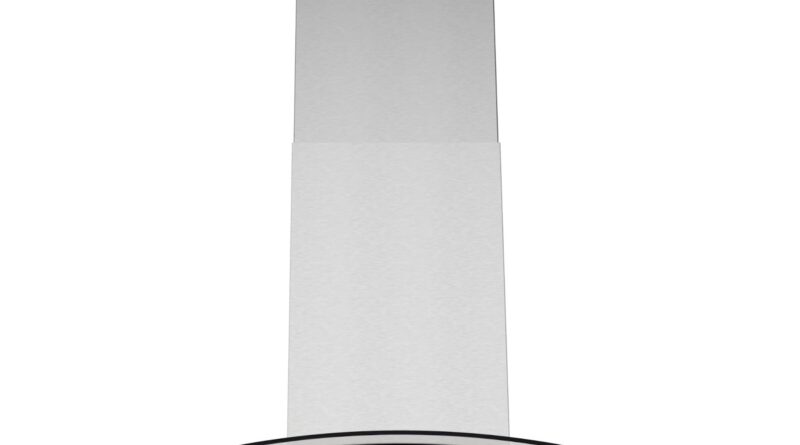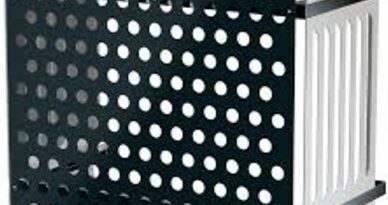What to Look for When You Buy Kitchen Range Hoods Online
When upgrading your kitchen, one of the most essential appliances to consider is the range hood. Not only does it play a crucial role in maintaining a clean and fresh kitchen by removing smoke, steam, and odors, but it also adds a touch of style and sophistication to the space. With the convenience of online shopping, buying a kitchen range hood has never been easier. However, before making a purchase, it’s important to understand the various factors that affect the performance and aesthetic of the range hood. This guide will help you choose the right range hood when you buy kitchen range hoods online, whether you’re considering ducted range hoods, undermount options, or other styles.
Key Features to Consider When Buying a Range Hood
Before making any purchase, it’s crucial to evaluate a few essential features to ensure you get the best value for your investment. Whether you’re replacing an old range hood or installing a new one, considering these factors will guide your decision-making process.
1. Size and Fit
One of the most important aspects to think about when choosing a range hood is its size. You’ll want to make sure the range hood is the right size for your stove or cooktop. The width of the hood should ideally match the size of your cooktop, with a few extra inches on either side to ensure maximum efficiency. For instance, if you have a 30-inch cooktop, a 30-inch range hood is a good starting point.
It’s also important to think about the height at which the hood will be installed. For optimal performance, most range hoods should be installed between 24 to 30 inches above the cooking surface.
2. Ventilation Type: Ducted vs. Ductless Range Hoods
When shopping online for range hoods, you’ll typically come across two main ventilation types: ducted and ductless range hoods. Each has its benefits, and the right one for you depends on your kitchen setup.
- Ducted Range Hoods: These hoods vent air to the outside, making them the most effective at removing smoke, odors, and airborne grease. If your kitchen has an existing venting system, ducted range hoods are a great option as they ensure maximum airflow and filtration.
- Ductless Range Hoods: Also known as recirculating hoods, these don’t require a vent system. Instead, they use carbon filters to trap odors and particles before recirculating the air back into the kitchen. Ductless models are easier to install and are a great option for kitchens that don’t have external venting options, though they may be less efficient than ducted systems.
3. Suction Power (CFM)
The suction power of a range hood is measured in cubic feet per minute (CFM). The higher the CFM, the more air the hood can move, making it more efficient at clearing smoke, steam, and odors.
For a standard kitchen, a range hood with a CFM rating between 300 and 600 should be sufficient. However, if you cook frequently or prepare meals that generate a lot of smoke or steam, you may need a hood with a higher CFM rating. Professional-grade kitchens may require hoods with a CFM rating of 900 or more. It’s important to balance the CFM with the size of your kitchen and the power of your stove to ensure efficiency without excessive noise.
4. Noise Level
Noise can be a significant factor when using a range hood, especially if you like to cook in peace. Range hoods with higher CFMs can often produce more noise, but there are plenty of models available that balance power with quiet operation.
Look for range hoods that include a low-noise motor or have a noise level rating measured in sones. A rating between 1.0 and 3.0 is typically considered quiet, while anything higher may produce an intrusive noise.
5. Filter Type and Maintenance
Most range hoods use filters to capture grease and particles. There are two main types of filters you’ll encounter when you buy kitchen range hoods online:
- Mesh Filters: Made from aluminum or stainless steel, mesh filters are durable and easy to clean. They effectively capture grease and other particles, but they may need to be cleaned more frequently.
- Baffle Filters: Baffle filters are often found in high-end, commercial-style range hoods. They’re made from stainless steel and have a series of curved panels that trap grease and air particles. While more expensive, they tend to be more efficient and easier to clean than mesh filters.
If you’re opting for a ducted range hood, ensure that it has the correct type of filter for your ventilation system. Additionally, check if the filters are dishwasher-safe to make cleaning more convenient.
6. Design and Aesthetic
When choosing a range hood, aesthetics are just as important as functionality. Your kitchen is likely the heart of your home, so it’s important that your range hood complements the overall design. Range hoods come in various styles, such as:
- Wall-Mounted Range Hoods: These are ideal for kitchens where the range is located against a wall. Wall-mounted hoods have a sleek, modern look and are one of the most popular options.
- Under-Cabinet Range Hoods: If you want a more streamlined look, undermount range hoods are installed underneath cabinets. They’re a great choice for smaller kitchens or those who prefer a minimalist design.
- Island Range Hoods: For kitchens with a stove located on an island, island range hoods are a great option.
Conclusion
In conclusion, when you buy kitchen range hoods online, there are many factors to consider to ensure you make the right choice. From size and ventilation type to suction power and noise levels, these elements are essential for selecting the right range hood for your needs. Whether you’re interested in the efficiency of ducted range hoods, the versatility of undermount range hoods, or the convenience of a ductless system, there’s an option for every kitchen style and budget. By focusing on these key features, you’ll find a range hood that not only enhances the look of your kitchen but also provides superior performance for years to come.




